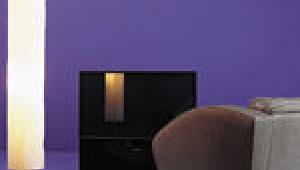HD DVD and Blu-ray Disc 2006: An In-Depth Report Page 3

Sony's BDP-S1 Blu-ray Disc Player
According to recent reports, the first-gen Blu-ray players won't include the ability to decode Dolby Digital Plus, TrueHD, or DTS-HD High Resolution/HD Master Audio at all. As mentioned previously, we've been informed that all Sony/MGM titles will carry uncompressed linear PCM tracks and current standard Dolby Digital or and/or DTS. If those uncompressed PCM tracks are encoded at full master resolution this is no compromise. It could be that Blu-ray's additional supporting studios will also do the same, in which case the players' inability to decode the new formats will be relatively moot. The BD players will send uncompressed PCM—up to eight channels at up to 24/192—over the HDMI 1.1 outputs, and the players will also convert uncompressed PCM to analog with the analog outputs functional and no downconversion. Scores of AVRs and processors manufactured in the last several years include at least one multichannel analog input, but not all of them offer full signal processing (channel levels, delays, bass management, etc.) through these inputs. In this regard it's currently not clear what the signal processing capabilities will be in the players for either format.
The qualitative issues and questions that these specs raise, and that we will be monitoring closely in our evaluations of the formats, players and discs, are as follows. One, while these formats are capable of carrying, and apparently in the case of Blu-ray will carry, uncompressed multichannel PCM, will this stress the bit budget to the point of degrading image quality? And even if that's the case, wouldn't that just offer the studios the opportunity to offer the HD equivalent of "SuperBit"discs down the road, with more layers and thus more data available for the picture and sound?
Also, the fact that HDMI will be required for digital transmission of both uncompressed PCM and the new codecs brings into play two issues. The first is the audio quality of this transmission method itself. We've not had an opportunity yet to see jitter measurements or other objective quantifications of HDMI's sonic acumen. Although I've not had an opportunity to evaluate HDMI's sound quality subjectively, Editor Tom Norton has and the early reports aren't good. In direct comparison, SPDIF sounded superior in his initial evaluations. (I reported on a leaner bass and rougher treble using an HDMI link for DD soundtracks and two-channel CDs in my review of the Denon AVR-5805 receiver.—TJN)
The second issue with HDMI and digital audio transmission is that in order to extract the digital audio for decoding, whether it be PCM or the new codecs, we'll need to switch our HDMI digital video signals through a surround sound processor or AVR. Unless the players sport two HDMI outputs, we'll be entirely dependent on the video quality of the switching in the surround sound components that must be inserted between our HD sources and our displays.
The X Factor- Interactivity
Although it's been promised over and over that these new formats will offer cool new features along with high-definition picture and sound, there have been few elaborations on exactly what form these "must have" new features will actually assume. We can only hope for enhanced interactivity that will actually benefit the consumer, and not just additional layers of copy restriction for the sole benefit of the content providers.
While interactivity demonstrations have been few and far between, the HD DVD group did offer a clear glimpse at CES '06 of what the next-gen feature sets will look like. Chapter selection will no longer require leaving the film and going to a separate menu screen. The movie rolls on in full motion, while the chapter selections load at the bottom or side of the screen. Select a new chapter and you're there without ever bouncing out to a separate, and increasingly cumbersome chapter menu screen (DVD producers seem to want to show off to justify their paychecks more and more often these days.)
During the CES HD DVD interactivity demo we also saw what commentary tracks will look like. Rather than providing audio-only commentaries, the capability will exist for video commentaries. Users will apparently be able to select a talking head, and see the people delivering the commentary. Users can easily choose whether the film stays in the foreground as the main video, with the commentary talking head translucent at the bottom of the screen, or vice verse. Not exactly the reinvention of the wheel, but clear upgrades overall, and who knows where this technology will go.
HD DVD's interactivity layer is based on a technology called iHD, which like HD DVD itself is considered less robust than BD's solution but cheaper and easier to implement. Blu-ray's interactivity layer is based on Java, is more complex and is already proving more costly and time consuming to implement as its implementation is rumored to be behind the Blu-ray based PlayStation3's late arrival to market.
Little information has been offered as to what doors Java interactivity opens to content providers and consumers, but enhanced networking functionality and gaming have been mentioned. And BD-J (Blu-ray Disc-Java) also allows a dynamic encryption scheme that can change in mid-production should the current encryption become compromised, and other robust measures to combat piracy.
Copy Restriction and That Dastardly Image Constraint
The rush to market by both formats has been amusing at times to watch. HD DVD was initially set for a late 2005 launch, but the specification for the AACS (Advanced Access Content System) copy protection scheme used for both formats wasn't even finalized on an interim basis until February of this year!
While the finer points of AACS are technical minutiae, two aspects of it are already known and even controversial. AACS in both formats allow for Mandatory Managed Copy, and down-rezzing of analog component outputs in the form of the Image Constraint Token (ICT.)
Mandatory Managed Copy (MMC) essentially means that consumers will be able to make at least one copy of their HD DVD and BD movie discs on a computer, and stream it around a digital networked home. HD DVD was the first of the two formats to guarantee this feature, and it is one of the things that won Microsoft and Intel, both of whom have major designs on home entertainment networking, over the Toshiba format's camp.
Now that both formats offer MMC, it's fair to point something out that may not be obvious, and that has to do with managed copy as a term. While it is apparently guaranteed that you can copy your disc onto a computer and/or home network, this doesn't necessarily mean it will be free of charge to do so. I have not heard any studio even mention charging for copies, so I'm not sounding an alarm bell here. But we've all known for sometime that DRM is about not one thing but two: the ability to prevent piracy (or at least make it a lot harder) and protect intellectual property, and the ability to charge for the use of that intellectual property.
While I fully back fair use copying of legally purchased titles, consider that all of the HD DVD titles that have been released are already available for rent on NetFlix, and it wouldn't be surprising if BD movies follow suit. Once HD DVD and BD computer drives are available, some mechanism should be in place to prevent people from renting discs and simply dumping them onto their hard drives, and into their libraries. Having a solid DRM system makes the studios feel secure enough to release their movies on these new formats, and as long as its implemented sensibly and proper respect for fair use remains in play, I'm OK with it.
On the other hand, I have no love whatsoever for image constraint, which is a fancy pants way of saying that AACS allows studios the option of downconverting the analog component outputs on HD DVD and BD players. The way this works is that HD DVD and Blu-ray players recognize a digital flag embedded in the metadata of a disc called the Image Constraint Token. Using this flag is totally at the behest of the content provider, but if implemented the player will see the ICT and downconvert the analog outputs of the player from1920x1080 to 960x540. While this seems like half the resolution of a 1080p disc, it's actually only a quarter since the horizontal and vertical resolution are both halved.
- Log in or register to post comments
























































